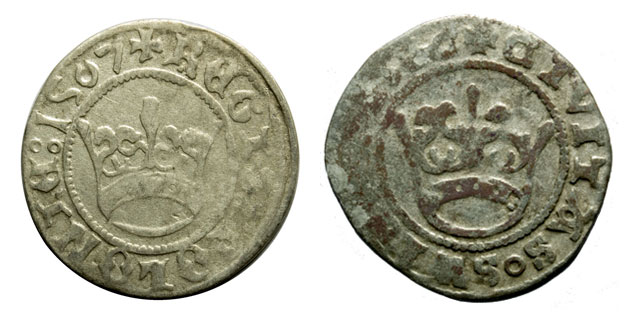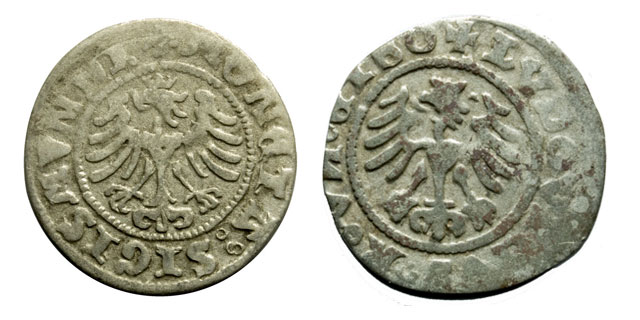Half groschen of Swidnica, i.e. a fraud in the family
Published:2021-07-27
In 1517, by the decision of Ludwik II Jagiellończyk, the mint in Świdnica started minting half groschen very similar to that of Sigismund I the Old, issued in the Kraków mint. Despite the different inscription along the rim, the average inhabitant of our part of Europe was not able to distinguish these coins at first glance, because hardly anyone could read back then...

Obverse of half groschen of Sigismund I the Old... ...and half groschen of Ludwik II the Jagiellonian

Reverse of half groschen of Zygmunt I the Old... ...and half groschen of Ludwik II the Jagiellonian
Why did Ludwik II make such a decision? If you don't know what's going on, then ... yes, it's about money!
At that time, there was a shortage of a small coin in Poland. Louis II took advantage of this fact by issuing very similar coins, but containing much less silver (which at first glance could not be noticed). In Krakow, 256 half groschen were minted from one silver fine, and as many as 340 in Świdnica!
Sigismund I the Old intervenes with the Silesian princes, in the Hungarian Sejm, but pennies are still issued, and the last copies appear with the date 15Z7. As a result of such a fraud, Ludwik II made a significant profit, and Poland had to collect counterfeit coins from the market for many years.
You can see the Kraków half groschen of Sigismund I the Old, as well as the Swidnica half groschen of Ludwik II Jagiellonczyk on our website.


